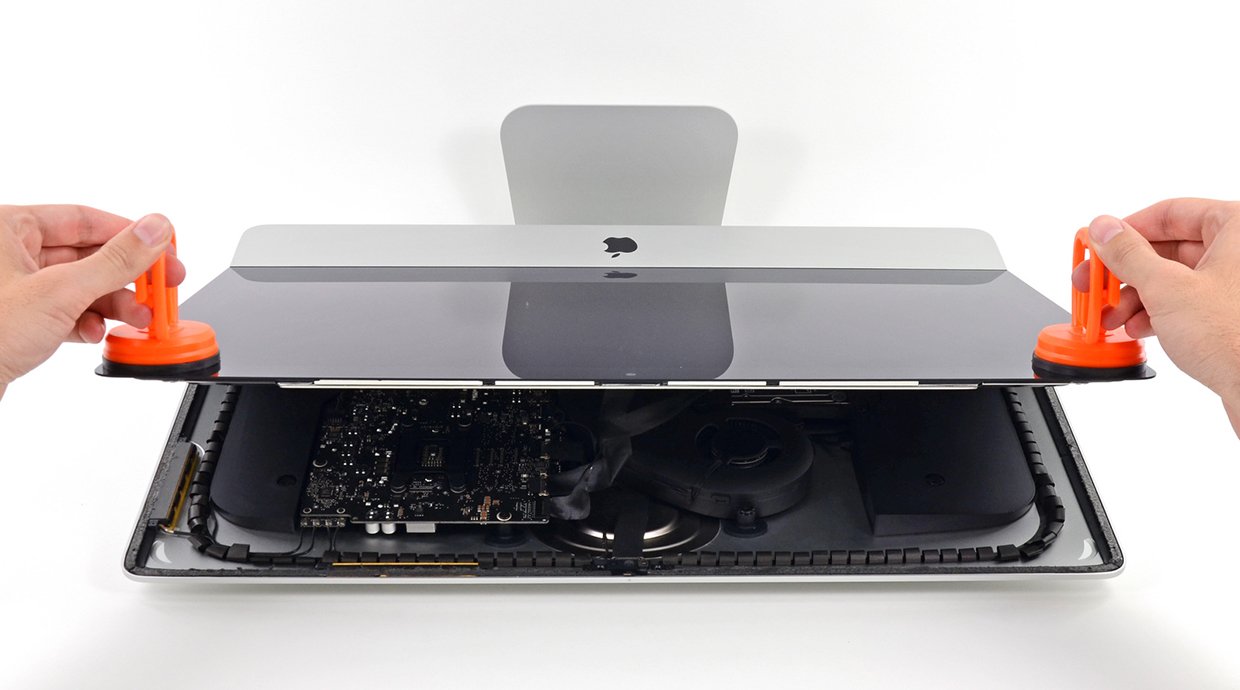Curious number of new iMacs born in the USA

For some time now there have been Apple products that bore "Assembled in USA" labelling, specifically built-to-order custom-configured Macs. But standard configurations of MacBooks and iMacs universally came over from China. As noted by Fortune, some of Apple's new super-slim 21.5-inch iMacs are coming with "Assembled in USA" labels, in standard configurations available off-the-shelf at Apple's retail stores. Now, not all of the new iMacs bear USA labeling, there are a lot that also come with the China labels still. But enough to be curious.
Back in May of this year, Apple CEO Tim Cook was the opening interview for D10, offering a wide-ranging discussion about the past, present, and future of Apple. At that time, All Things D's Kara Swisher and Walt Mossberg pressed Cook on a touchy subject for any multinational manufacturer of anything: why build in China instead of in the US? Cook offered a safe answer, explaining that he wants Apple products to be built in the US of A, but that the flexibility and speed of the Chinese industrial complex and availability of skilled workers in China make building iPhones and the like hard to justify manufacturing in the US. But, said Cook, Apple does purchase several components from US manufacturers; the ARM-core chips used in iOS devices are built in Texas and Gorilla Glass for the mobile screens is manufactured in Kentucky by Corning. Alas, the boxes kept coming, noting "Designed in California. Assembled in China."
That "Assembled in China" line is a standard note on many devices (with the exception of a few companys, such as Sony who tends to build in Japan, or Samsung who puts things together in South Korea), though for some time now there have been Apple products that bore "Assembled in USA", specifically built-to-order custom-configured Macs. But standard configurations of MacBooks and iMacs universally came over from China. As noted by Fortune, some of Apple's new super-slim 21.5-inch iMacs are coming with "Assembled in USA" labels, in standard configurations available off-the-shelf at Apple's retail stores. Now, not all of the new iMacs bear USA labeling, there are a lot that also come with the China labels still.
Why exactly these standard entry-level iMacs are coming from US assembly plants instead of China isn't clear. As 9to5Mac points out, the regulations surrounding "Assembled in the USA" are quite specific, requiring more than just a screwdriver to make it so. It could be Apple actually moving more manufacturing to the United States, or it could be a case of difficulties in the new iMac's complex production necessitating that the US-based custom-order plants pick up some of the slack in order to meet expected demand at launch time. Maybe it's a combination of both.
There's still a lot that would need to happen for Apple or any other purveyor of electronic gadgets to be able to move an entire manufacturing line for mass market products like iMacs or iPads or iPhones to the United States, but you've got to start somewhere.
Source: Fortune, 9to5Mac
iMore offers spot-on advice and guidance from our team of experts, with decades of Apple device experience to lean on. Learn more with iMore!
Derek Kessler is Special Projects Manager for Mobile Nations. He's been writing about tech since 2009, has far more phones than is considered humane, still carries a torch for Palm, and got a Tesla because it was the biggest gadget he could find. You can follow him on Twitter at @derekakessler.

